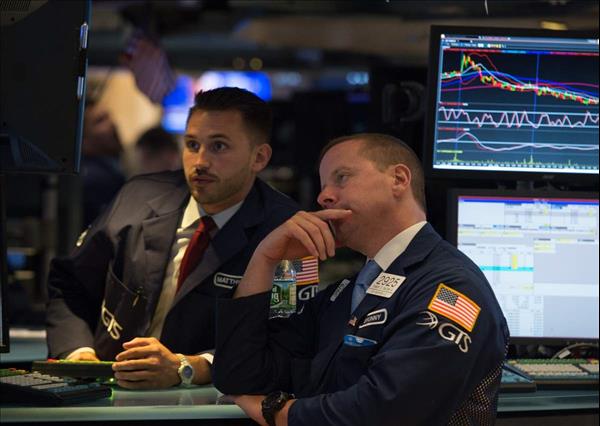
Macro storm clouds darken this autumn
Despite North Korea, Charlottesville, Hurricane Harvey, a spasm of risk aversion, a fall in the yield of the 10-year Treasury note to 2.10 per cent and an eight per cent slump in West Texas crude oil, the S & P 500 ended August with a 0.1 per cent gain and the Nasdaq was up almost one per cent, thanks to four successive strong sessions last week. Yet the US stock market is now priced to perfection, with the Shiller P/E (the cyclically adjusted price earnings or CAPE ratio) is 30.8, the highest in history other than on the eve of the October 1929 and March 2000 stock market crashes. It is ironic that the best performing sectors in 2017 are technology (the ultimate high-beta sector) and utilities (the classic defensive sector!). Despite all the macro financials and political crises that confront the financial markets, the Volatility Index has again fallen below 11. The financial markets have concluded that weak inflation data, the Hurricane Harvey shock and Dr Yellen's failure to discuss monetary policy at the Jackson Hole central banker's conference means "lower for longer" interest rates.
This is a risk to the stock market. If the Federal Reserve shifts to a more restrictive monetary policy, volatility will spike and risk assets like equities and corporate/high yield debt would get slammed. The Yellen Fed has sent smoke signals to the capital markets that it intends to shrink its $4.5 trillion post-Lehman balance sheet. However, the Fed and the ECB will do their best not to allow their "taper" strategies or timetables to morph into a global liquidity squeeze. After all, the meteoric rise of the US stock market since Obama's second-term win in 2012 has been primarily due to a rise in valuation multiples, not just acceleration in earnings per share growth rates. The next stock market correction does not need a US recession to happen.It is hard to discount geopolitical black swans in the Trump era. North Korea's nuclear threats and missile launches could trigger a tragic miscalculation in international relations and a catastrophic war in North Asia. Another source of geopolitical risk is Trump's threat to terminate the Nafta and demand for trade tariffs against China. China's distaste for regime change in North Korea and its mercantilist trade policies are on a collision course with the Trump White House.
The polarised US domestic politics scare is also a source of stock market risk as Congress debates the debt ceiling and the fiscal 2018 budget. Tax reform could be the most bitter legislative battle for President Trump. It is a good omen that Gary Cohn and Steve Mnuchin run economic policy while Steve Bannon has been ousted from the White House. Yet the Democrats will bitterly oppose Trump's tax reform proposal. The two per cent rise in technology shares on Wall Street tells me the financial markets price in strong growth, a Fed on hold and a credible tax reform package. Will the Nasdaq be vindicated this fall? This is a major risk.The US dollar index has fallen nine per cent in 2017, largely due to disillusionment about President Trump's pro-growth agenda. This has been a tailwind for S & P 500 earnings growth in the first and second quarters of 2017. However, any rise in the US dollar due to a successful tax reform deal would remove this tailwind. If earnings growth disappoint or Treasury bond yields spike due to Federal Reserve balance sheet normalisation, US equity indices could well correct by eight to 10 per cent in what has been seasonally the most dangerous two-month period for Wall Street.
The writer is a global equities strategist and fund manager. He can be contacted at .
Legal Disclaimer:
MENAFN provides the
information “as is” without warranty of any kind. We do not accept
any responsibility or liability for the accuracy, content, images,
videos, licenses, completeness, legality, or reliability of the information
contained in this article. If you have any complaints or copyright
issues related to this article, kindly contact the provider above.


















Comments
No comment